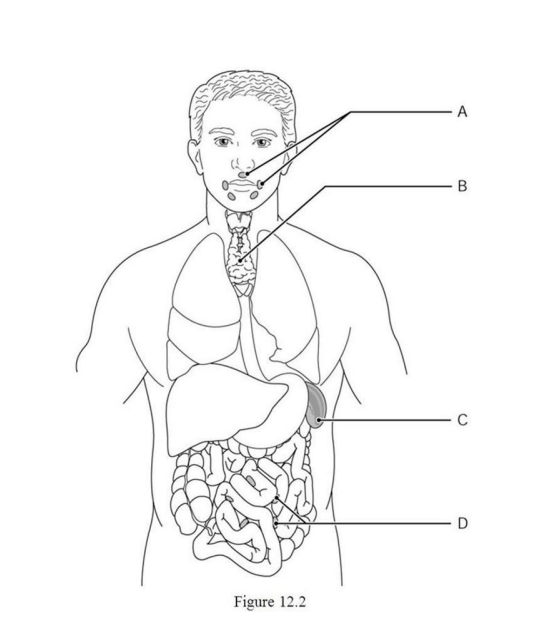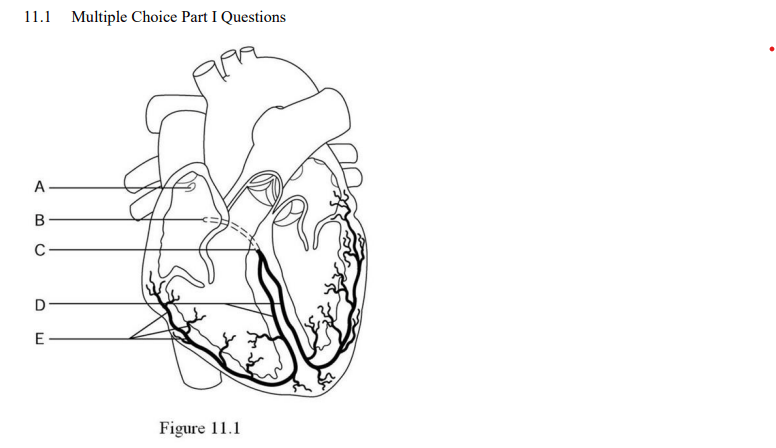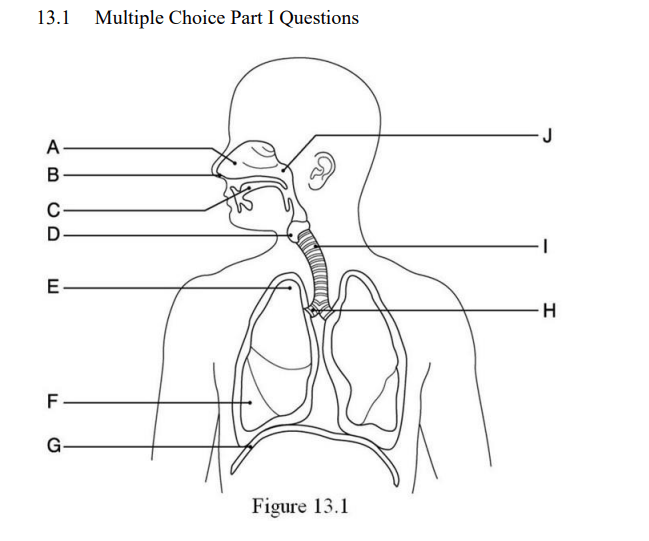Why is the left ventricle the largest chamber of the heart?
that chamber acts as the more powerful systemic pump of the heart.
What chambers of the heart receive blood?
What chambers of the heart are responsible for discharging blood?
Atria receive blood.
Ventricles discharge blood.
Lymph is largely composed of water that has escaped from ________.
blood
inflammation
What lung sound is associated with fluid or mucus build up in the lungs?
Crackles
What is COPD? What is the main cause of COPD?
Chronic Obstructive Pulmonary Disease.
Usually smoking or persistent inhaled toxins/debris.
What is the ring of vessels connecting the anterior and posterior circulations of the brain.
Circle of Willis!
What are the chordae tendineae? What are their purpose?
The tiny white cords that anchor the cusps of the heart valves to the walls of the ventricles?
Blood storage, platelet storage, lymphocytes, it fights invading germs in the blood
Excess accumulation of fluid, which impairs the exchange of materials within the tissues is known as _______.
Edema
When auscultating STRIDOR - what do you presume is happening to the patient? What does it sound like?
UPPER AIRWAY OBSTRUCTION (ANAPHYLAXSIS, CHOKING, SWELLING, UPPER AIRWAY TRAUMA, ETC.)
Aggressive wheezing in upper airway
What is the term for 'lung collapse'?
Atelectasis
What layer of the heart wall is stimulated by the Purkinje Fibers.
Myocardium
What is the purpose of the hepatic portal vein?
Drains blood from the digestive tract organs to the liver
Label the lymph node, lymphatic capillary, lymphatic duct, blood capillary
You probably are right
Label the thymus, tonsils, spleen, peyers patches, and appendix. 
You probably got it.
What are the 3 regions of the pharynx?
nasopharynx, oropharynx, laryngopharynx
The presence of air in the intrapleural space causing compression or pressure on the lung is known as
pneumothorax
 Label the 5 letters associated with the rhythm waves above, and what each represents.
Label the 5 letters associated with the rhythm waves above, and what each represents.
P- atrial depolarization (atrial contraction)
QRS - ventricular depolarization (ventricular contraction) (atrial repolarization is hidden within the QRS bc it's small)
T- ventricular repolarization (rest/reset)
What valves close during S1 (lub)?
What valves close during S2 (dub)?
S1 - atrioventricular (mitral and tricuspid) valves
S2- semilunar (aortic and pulmonary) valves
Humoral immunity vs. Cell-mediated immunity
B cells (antibodies) - humoral
Cytotoxic T cells - cell-mediated
What chemical do white blood cells and macrophages secrete to raise body temperature and induce fever?
Pyrogens
Think pyrexia - fever
What 2 muscle(s)/muscle groups contract and relax during inspiration and expiration?
Diaphragm; external intercostals (between the ribs)
Where in the respiratory system are the 'c shaped' rings? What type of tissue is this, and what purpose do they serve?
Hyaline cartilage in the trachea, reinforce the trachea.

Label the AV node, SA node, Bundle of His, Purkinje Fibers, Bundle Branches
I'll just tell ya if you're correct lol.
State 3 symptoms associated with congestive heart failure (CHF) and why these symptoms occur.
Fatigue, SOB, tachypnea, edema, weakness, loss of appetite
Cardiac output and stroke volume are decreased
Explain the origin and pathway of lymph.
Lymph fluid arises from blood plasma that has been forced out of the capillary beds by osmotic and hydrostatic pressures. The fluid left behind is called interstitial fluid. The interstitial fluid is then picked up by lymph capillaries, after which it is called lymph. Lymph is routed up the lymphatic vessels until it is finally returned to the venous system through either the right lymphatic duct or the thoracic duct.
Your patient smokes cigarettes that can damage and eventually destroy the cilia in the passageways of the lungs. Convince her that stopping smoking will benefit her cilia and respiratory mucous membranes.
Intact mucous membranes are part of the immune system's first line of defense. The cilia benefit us by sweeping dust- and bacteria-laden mucus (think "sticky trap") superiorly toward the mouth, preventing it from entering the lungs, where the warm, moist environment provides ideal conditions for bacterial growth. Damaged or destroyed cilia place your patient at a higher risk of infection. Without an adequate mechanism for the removal of mucus in the lungs, our bodies must rely on the second and third lines of defense.
Label the R/L bronchi, larynx, pharynx, trachea, epligottis, nasal cavity 
I'll just tell ya if you're right
What odorless, colorless gas binds preferentially with the same binding site on hemoglobin as oxygen? What could this 'binding' mean for your patient?
Carbon monoxide
It binds to hemoglobin in the blood, reducing the ability of blood to carry oxygen and disrupts oxygen delivery to the body's organs. S/S of carbon monoxide exposure are fatigue, headaches, confusion, and dizziness due to inadequate oxygen delivery to the brain.